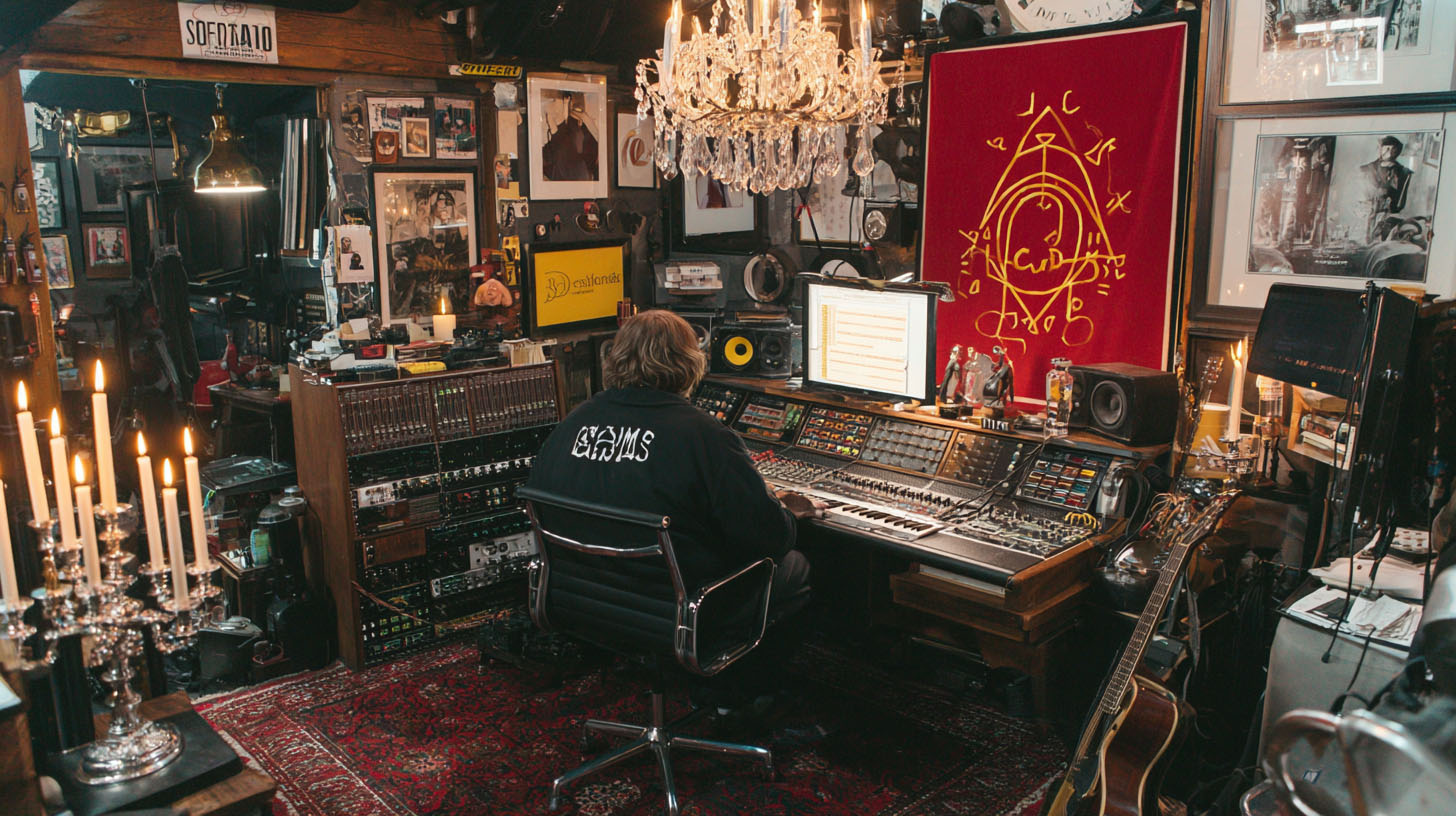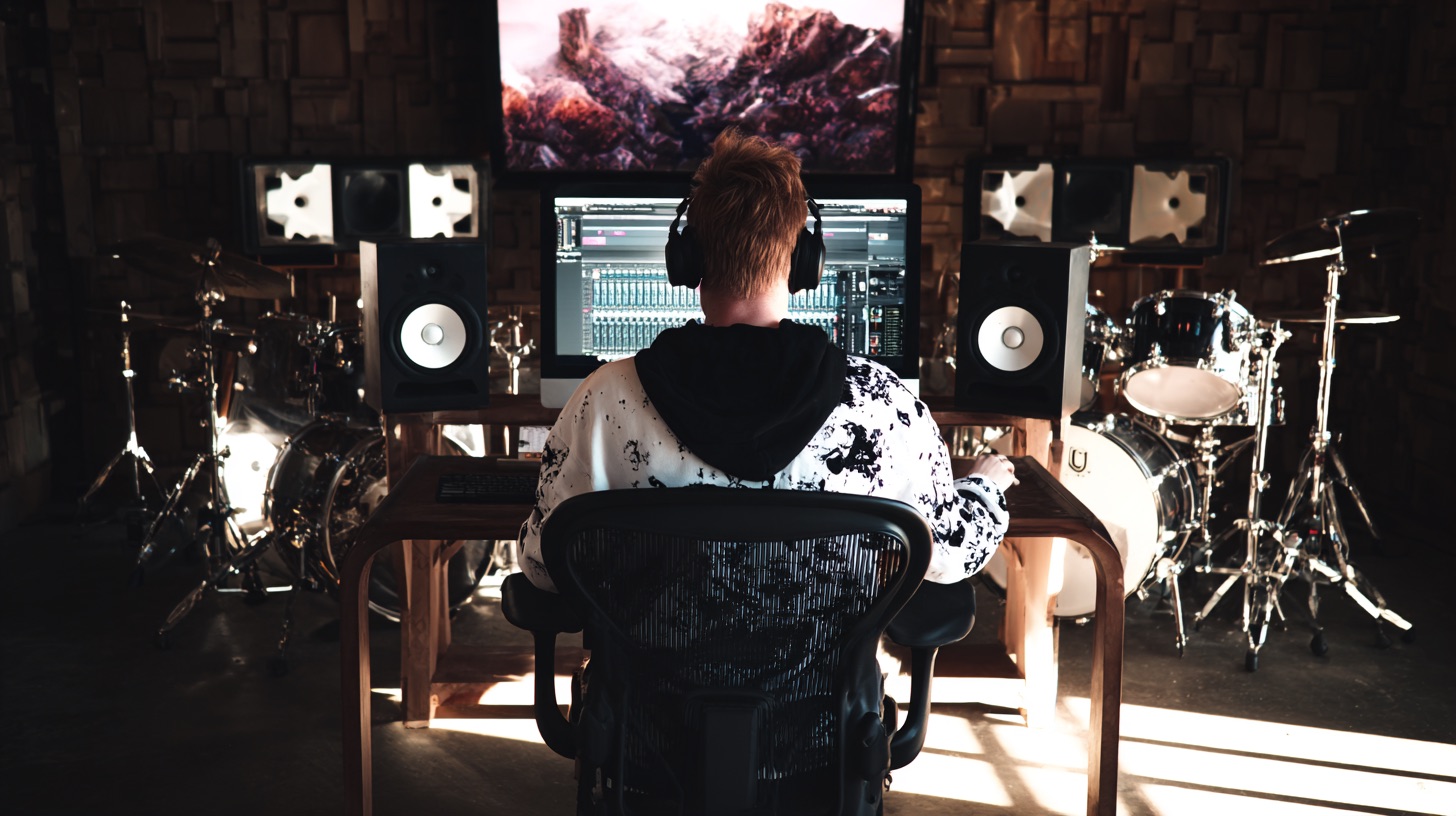
Mixing Massive Intervals Drums in a Small Room w/ Sam Guaiana
Nail The Mix Staff
Let’s be honest: not all of us are tracking drums in a massive, acoustically perfect live room. More often, we’re dealing with a basement, a garage, or even a tight corridor. So how do you get that massive, professional drum sound that modern metal demands from a less-than-ideal space?
We got a masterclass from producer and mixer Sam Guaiana as he broke down his mix for the prog-metal giants Intervals. He was faced with this exact challenge: turning a modest drum recording into a sound that could fill a stadium. The solution wasn’t one magic plugin, but a clever combination of taming the real room, building a custom space with reverb, and layering in heavily processed samples. Let’s dive into how he did it.
Taming the Real (But Small) Room Mic
The session included a mono room mic that was recorded in a corridor. On its own, it sounded exciting and had tons of low end, but in the context of a dense, technical mix, that raw energy can quickly turn into mud. The first job was to get it under control.
Carving Out Space with EQ
The raw mono room was full of unfocused low-end boom. While it sounded cool in solo, it would just fight the kick and bass in the full mix. Sam’s first move was to be ruthless with his EQ.
He used a high-pass filter to aggressively get rid of most of that low-end information. The goal wasn’t to use the room mic for low-frequency weight, but for its mid-range character and vibe.
For the top end, he used a dynamic EQ to clamp down on any harsh, sizzly frequencies. Instead of a static cut that would dull the track, the dynamic EQ only kicks in when those fizzy cymbal transients get too loud, taming the worst of it without sacrificing the overall “air.”
The “One-Trick Pony” Plugin for Harshness
Even after some EQ, the room mic still had some harshness that needed to be addressed. For this, Sam reached for Soothe.
He’s a fan of this plugin because it does one specific job incredibly well: identifying and reducing resonant harshness automatically. He started with the “drum room harsh” preset, tweaked it slightly, and it immediately smoothed out the track with almost no effort. It’s a perfect example of a purpose-built tool that solves a common problem when mixing drums, making it an invaluable asset in the studio.
Building a “Fake” Room from Scratch with Reverb
With the real room mic cleaned up, it was time to build a bigger sense of space. The stereo room mics from the session weren't giving Sam the vibe he wanted, so he decided to construct his own “room” using a reverb bus. He used a preset from a 2020 Bresson reverb, but the real magic is in what he sent to it.
Beyond Overheads: Selective Pre-Fader Sends
Typically, you might just send your overheads to the drum reverb. But in this case, Sam had already EQ’d a lot of the kick drum’s body out of the overheads to keep them focused on the cymbals. Sending just these thin-sounding overheads to the reverb resulted in a weak, kick-less reverb tail.
The solution was to build the reverb sound piece by piece using pre-fader sends from the individual close mics.
- Kick Drum: He sent the close mic of the real kick drum (pre-fader) to the reverb. This brought the essential low-end punch and attack back into the ambient space, completely independent of the kick’s level in the main mix.
- Snare Drum: Next, he sent the close snare mic to the verb. This added the necessary crack and body to the reverb, making the snare feel powerful and three-dimensional.
- Toms: Finally, he sent the toms to the same reverb bus. It would sound weird to have the kick and snare in a big space while the toms were completely dry, so this move ensured the entire kit felt cohesive and existed in the same environment.
By using pre-fader sends, Sam Guaiana built a custom drum room sound where he had total control over the tonal balance of the ambience.
Layering in Processed Room Samples
The final layer in this massive drum sound came from sample augmentation. To add even more size and character, Sam blended in some dedicated room samples.
Choosing and Tightening the Samples
For this mix, Sam opted for rooms from GetGood Drums (GGD). He loved the overall tone of the samples, but found that their natural decay was a little too long, which could wash out the mix and blur faster passages.
To fix this, he used a transient designer plugin. By pulling back the “sustain” knob by around 20%, he was able to shorten the reverb tails of the samples significantly. This trick allowed him to keep the awesome initial tone and impact of the GGD rooms while ensuring they were tight and didn’t linger too long.
Slamming the Samples for Vibe
These room samples weren’t meant to be subtle. The goal was to make them slam, especially the snare. To do this, he used extremely aggressive compression with a VCA-style compressor plugin (the Arouser).
To keep the compression focused on the snare and not pumping wildly from the kick drum, he engaged the compressor’s sidechain high-pass filter and set it around 70 Hz. This tells the compressor to ignore the lowest frequencies, resulting in a much more controlled and punchy response.
After the compressor, he added an EQ to clean up the aftermath. Heavy compression can often bring out some gnarly frequencies or add a “stuffy” quality. He used the EQ to cut out any problematic buildup, get rid of unnecessary low end, and boost a bit of sizzle to help the samples cut.
The Final Blend: A Massive Sound from a Small Space
When you blend all three of these elements together—the tamed and focused mono room, the custom-built reverb bus, and the tight, slammed room samples—the result is spectacular. The final drum sound is huge, professional, and sounds like it was tracked in a world-class studio. You would never guess that the core of it was recorded in a humble basement and a corridor.
This is a powerful reminder that with the right engineering and mixing techniques, your physical recording space doesn’t have to be a limitation.
These are precisely the kinds of real-world mixing strategies that can take your productions to the next level. Imagine getting a front-row seat to watch the pros implement these techniques on actual hit records. At Nail The Mix, that’s exactly what you get every month. If you’re ready to move past trial-and-error, you can learn how to apply these concepts and unlock your sound by mixing modern metal beyond presets.
Get a new set of multi-tracks every month from a world-class artist, a livestream with the producer who mixed it, 100+ tutorials, our exclusive plugins and more
Get Started for $1






